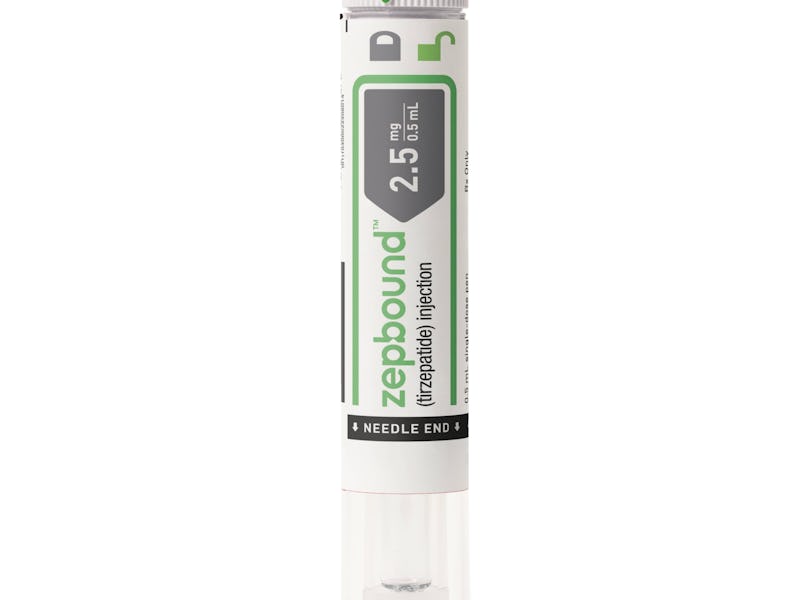Which Weight Loss Drug Is Best And Safest? Here’s What Actually Sets Them Apart
Despite the snazzy name, Zepbound is anything but new.

The popularity of anti-diabetes drugs like Ozempic and Mounjaro being repurposed for weight loss is soaring in the United States. Just last month, the Food and Drug Administration (FDA) approved Eli Lilly’s injectable Zepbound on November 8 specifically for chronic weight management in people with obesity or who are overweight.
Despite the snazzy name, Zepbound is anything but new. It contains the same active ingredient as Mounjaro, known as tirzepatide. The two drugs are quite literally the same, with the same active ingredient and dosage. The brand name delineates what the drug is being prescribed for: Mounjaro for Type 2 diabetes and Zepbound for weight loss. It is, however, purported to work better than rivaling Novo Nordisk’s popular weight loss drug Wegovy and may even run cheaper, which is especially decisive given the immense demand but not enough supply of Wegovy.
Here’s everything you need to know about Zepbound and how it compares to the other weight loss drugs on the market.
What is tirzepatide?
Zepbound, or its generic name tirzepatide, belongs to a brand-new class of medications called glucagon-like peptide 1 (GLP-1) and glucose-dependent insulinotropic polypeptide (GIP) receptor agonists.
A receptor agonist is a molecule that activates proteins called receptors that dot the outside of cells and act as an information hub, conveying messages from the outside in. Because receptors recognize and bind to specific molecules, receptor agonists typically mimic that target molecule. In the case of tirzepatide, it mimics both the GLP-1 and GIP hormones naturally produced by the stomach, which prompts insulin secretion.
This mechanism is particularly useful in Type 2 diabetes since the body cannot produce its own insulin. For weight loss, tirzepatide reduces appetite in two ways through GLP-1. First, it influences how long it takes the stomach to empty, and second, it interacts with areas in the brain harboring GLP-1 receptors. Through mimicking GIP, the drug is thought to affect the regulation and storage of fat tissue.
Semaglutide, also known by its brand names Ozempic and Wegovy, is also a GLP-1 receptor agonist but lacks the ability to influence GIP receptors. As such, it’s what’s called a “single agonist,” whereas tirzepatide is a “dual agonist.”
How does tirzepatide rank compared to semaglutide?
Ozempic and Wegovy have captured the weight loss spotlight since their recent FDA approvals. Ozempic was first approved in 2017 for Type 2 diabetics, whereas Wegovy, with its higher dose of semaglutide, was approved in 2021 specifically for adults with obesity or who are overweight with at least one weight-related condition, such as high blood pressure, high cholesterol, or Type 2 diabetes. In 2022, the FDA approved Wegovy for weight management in teenagers 12 years or older.
Tirzepatide as Mounjaro for Type 2 diabetes came late to the game in May 2022. However, development of the weight loss version of tirzepatide (aka Zepbound) began as early as 2017. At the time, a small phase two clinical trial involving 300 people with Type 2 diabetes saw some participants experiencing, on average, almost 13 percent loss of their starting body weight over six months.
Later, another larger study involving over 2,500 individuals with obesity saw around 63 percent of participants taking tirzepatide lose up to 52 pounds within 72 weeks. These results were released in April 2022.
Based on the clinical trial data so far, it seems tirzepatide results in greater weight reduction. For example, in an October 2022 study published in the journal Nature Medicine examining long-term weight loss effects, participants given a once-weekly injection of 2.4 milligrams of semaglutide experienced an average weight loss of 15 percent of their starting body weight. These effects persisted for the 104 weeks of semaglutide use.
However, in a July 2022 study published in the New England Journal of Medicine comparing the two drugs, “[r]eductions in body weight were greater with tirzepatide than with semaglutide,” the researchers write. Participants with obesity who received the lowest dose of 5 milligrams of tirzepatide lost 15 percent of their starting body weight just after 72 weeks. on higher doses of 20 milligrams, they lost 20 percent of their starting body weight.
What about side effects?
While drugs like Mounjaro, Ozempic, and Wegovy are considered safe, there’s a lot we don’t know about how these drugs affect the brain. It’s also come to light the concerns of cancer, organ failure, and not to mention stomach paralysis.
One 2023 study out of Canada compared stomach disorders among individuals on GLP-1 agonists to those on an older weight loss drug called bupropion-naltrexone. The GLP-1 group had a 9 times greater risk of pancreatitis, a 4 times greater risk of bowel obstruction, and a more than 3 times greater risk of gastroparesis, which is when the muscles in the stomach become paralyzed, JAMA Medical News reported this month. However, the absolute risks in the GLP-1 group were all about 1 percent or less per year of GLP-1 use.
Another concern is the unknown when it comes to long-term risks associated with these drugs, especially considering the potential for their lifelong use. For example, a personal or family history of medullary thyroid cancer, a type of cancer that forms in a part of the thyroid gland called the medulla, is a contraindication for anyone considering semaglutide and tirzepatide.
So, while these drugs hold the promise of helping countless people grappling with obesity, there is a pause for caution that we will only fully understand with time.